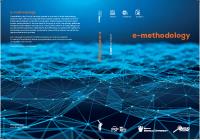An attempt to optimize human resources allocation based on spatial diversity of the first wave of COVID–19 in Poland
An attempt to optimize human resources allocation based on spatial diversity of the first wave of COVID–19 in Poland
Author(s): Andrzej Jarynowski, Monika Wójta-Kempa, Łukasz KrzowskiSubject(s): Regional Geography, Social differentiation, Health and medicine and law, Human Ecology, Socio-Economic Research
Published by: Fundacja Pro Scientia Publica
Keywords: spatial modelling; optimal resources allocation; COVID–19; SARS–CoV–2
Summary/Abstract: Aim. Our task was to examine the relationship between the SARS–CoV–2 arrival and the number of confi rmed COVID–19 cases in the fi rst wave (period from March 4 to May 22, 2020 (unoffi cial data)), and socio–economic variables at the powiat (county) level.Methods. We were using simple statistical techniques such as data visualisation, correlation analysis, spatial clustering and multiple linear regression.Results. We showed that immigration and the logarithm of general mobility was the best predictor of SARS–CoV–2 arrival times, while emigration, industrialisation and air quality explain most of the size of the epidemic in poviats. On the other hand, infection dynamics is driven to a lesser extent by previously postulated variables such as population size and density, income or the size of the elderly population.Conclusions. Our analyses could support Polish authorities in preparation for the second wave of infections and optimal management of resources as we have provided a proposition of optimal distribution of human resources between poviats. Although this isa retrospective analysis of the initial phase of the epidemic, similar patterns could repeat in case of new variants of SARS–CoV–2 or new respiratory disease for immunologically naive populations.
Journal: e-methodology
- Issue Year: 7/2020
- Issue No: 7
- Page Range: 100-122
- Page Count: 23
- Language: English

